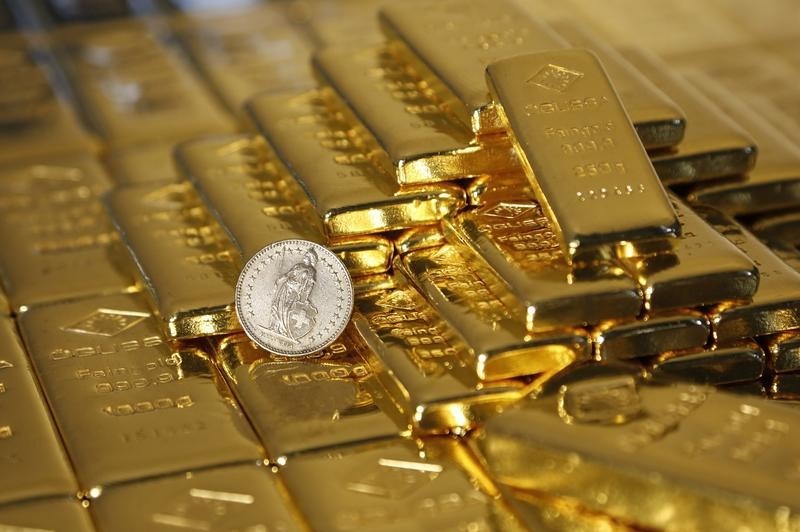Investing.com -- Gold prices edged lower on Friday in the absence of any new economic or political shocks to spur haven demand, but were still on course to end the week slightly higher.
U.S. retail sales and industrial production data released earlier both pointed toward a further cooling of the economy, although not to a degree likely to trigger alarm at the Federal Reserve. In two days of Congressional testimony this week, Fed Chairman Jerome Powell repeatedly indicated that he thought the economy is performing well and wouldn’t need further stimulus, barring a sharp downturn in activity.
U.S. industrial production fell 0.8% in October, more than an expected decline of 0.4%, while manufacturing output shrunk by 0.6%, in line with expectations. Capacity utilization at U.S. factories, meanwhile, fell to 76.7% its lowest rate since 2017, indicating a steadily growing degree of slack.
Earlier, retail sales had also fallen marginally short of expectations, although they were still growing at 3.1% on the year in October.
By 10:05 AM ET (1505 GMT), gold futures for delivery on the Comex exchange were down 0.4% at $1.467.25, while spot gold was down 0.3% at $1,467.01.
More volatile Silver futures were also under pressure, falling 0.6% to $16.93 an ounce. Platinum futures were up 0.7% at $889.20 an ounce.
The global trend toward lower interest rates, a key pillar of demand this year, remains intact. The central banks of both Mexico and Egypt cut interest rates again this week. Analysts at ING noted that weak retail sales and inflation data next week could also push the Bank of Canada into another rate cut.
Official buying, another major prop for demand, is set to remain supported by the Russian government’s decision earlier this week to reduce its exposure to the dollar in its investment portfolio. ING said that should result in net purchases of gold worth $32 billion by the end of next year.
However, the impact on global prices will only be indirect, as the buying will be done in off-market transactions with the Russian central bank. The CBR would in turn need to replenish its own gold holdings to keep asset allocation within its reserve portfolio constant.
